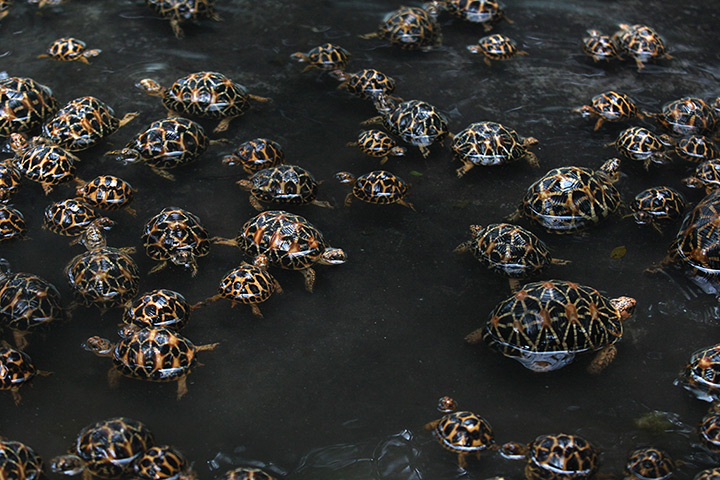TOP STORIES
New Clues Emerge On How Corals Bleach
Across the globe, reef-building corals live in symbiosis with algae, which provide the animals with food and their iconic brilliant color. But environmental stress — high temperatures, in particular — can kill corals by causing them to "bleach," a process in which they lose their vital algal friends and turn ghostly white.
Scientists have long thought that faulty algal photosynthesis (the process that uses light to make food) ultimately triggers coral bleaching, but new research now shows that substantial bleaching can also occur when heat-stressed corals are not exposed to light (such as at night).
Disease-Causing Genes Spread Easily in Emerging Lethal Fungus Infection
A rare, emerging fungal disease that is spreading throughout Canada and Northwestern USA can easily pass its deadly genes to related fungal strains within the species but less readily to more distant relatives, according to a study part-funded by the Wellcome Trust.
The findings will help to understand the origins of infectious outbreaks and predict the likelihood of the disease spreading to other populations and geographical areas.
Cryptococcus gattii is a type of fungus that was previously only found in warmer climates throughout the tropics. However, since 1999 outbreaks of highly virulent strains of the fungus have been reported in the cooler climes of Canada and Northwestern USA, causing serious illness in otherwise healthy people and domestic and wild animals and proving fatal in some cases.
...Professor Robin May from the University of Birmingham, who co-led the study with Dr Joseph Heitman from Duke University, said: "That the fungus can easily pass on the genes that make it more dangerous means that we could potentially see new strains of C. gattii cropping up spontaneously, causing outbreaks of disease in areas that were previously unaffected.
OTHER WILDLIFE HEALTH RELATED NEWS
- House finches hit by disease linked to bird feeders [View recent cases of mycoplasmal conjunctivitis reported in the news in Arkansas, USA on Disease News Map
 ]
]
- Parasite hitting bird populations in Sussex [Trichomonosis][Sussex, England, United Kingdom - Map It
 ]
]
- First dead elk, now dead catfish [Ute Lake, New Mexico, USA - Map It
 ]
]
- Flock of seagulls, found dead in Elmwood, spurs investigation [Elmwood, Louisiana, USA - Map It
 ]
]
- Not just bats and frogs: snake fungal disease hits U.S.
- Alabama ending permits for rehab of wild animals [Alabama, USA]
- Dolphin Deaths Continue To Climb In Region; Two High-Profile Incidents In OC Reported Last Week [Ocean City, New Jersey, USA]
- Study lays out options to reduce algae in lakes [Great Lakes, North America]
- Slimy, scaly and forgotten: we need to fund our invertebrates
- Wildlife officials kill ailing bighorn sheep to test for deadly infection in Boulder City herd [Boulder City, Nevada, USA]
- Wildlife experts work to keep bighorn sheep healthy [Clark Co., Nevada, USA - Map It
 ]
]
- Chronic Wasting Disease Testing Remains for SE Minnesota Deer [Minnesota, USA]
- Deer feeding ban now in effect in Virginia [Virginia, USA]
- Florida deer ban: Chronic-wasting disease prompts ban on deer imports
- Epizootic Hemorrhagic Disease Confirmed in Sheridan Region [View current reports in the news in Wyoming, USA on the Disease News Map
 ]
] - DNR: EHD found in deer in Muskegon County [Muskegon Co., Michigan, USA - Map It
 ]
] - Deadly deer virus may have returned [Adenovirus Hemorrhagic Disease (AHD)][Medford, Oregon, USA - Map It
 ]
]
- How Tiny Fish Could Reveal Effects of Chemical Exposure [e360.yale.edu]
- Simulating the Spread of Disease [Scientific American]
- The Many Mysteries of MERS [The Scientist]
- Researchers report findings from 2012 West Nile Virus outbreak in Texas [Texas, USA]
- Where Plagues Come From: Making A Catalog of the World’s Viruses [National Geographic]






No comments:
Post a Comment